Fall off the bone, sticky savory ribs in a soy sauce and vinegar braise. This is how to make Gordon Ramsay’s Chinese-style pork ribs!
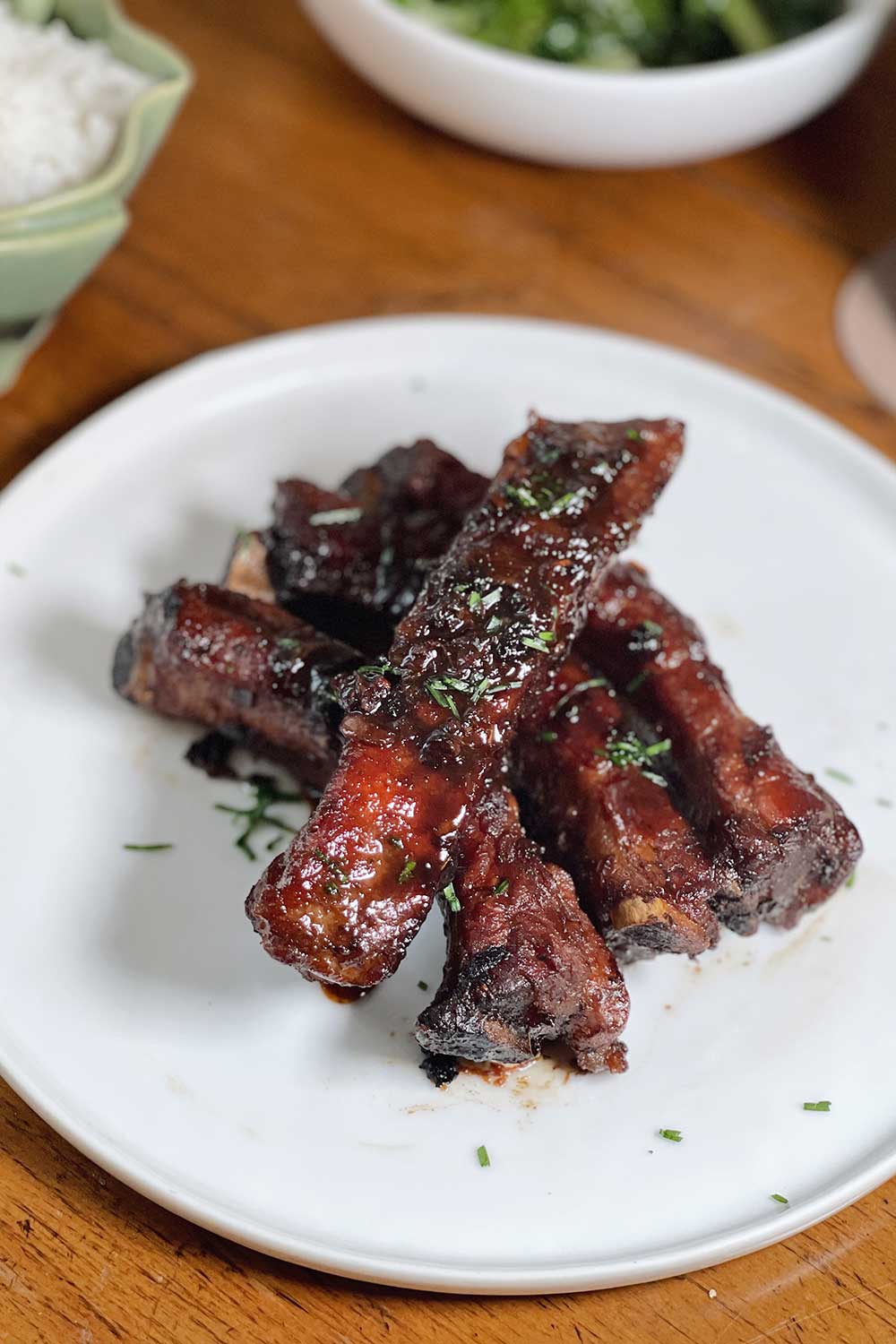
Gordon Ramsay’s Sticky Pork Ribs
I’m a huge fan of Gordon Ramsay.
His cooking shows are basically how I taught myself how to cook, ha! (Not the made-for-American reality cooking contests, but his old classics like 100 Recipes to Stake Your Life On and Boiling Point (which is more of a documentary).
I also thought his Masterclass sessions were the best out of all their cooking classes and he has two!
This old recipe of his, named simply ‘Sticky Pork Ribs’, is one of my favorites.
It’s Asian-y in flavor and makes delicious ribs coated in a sweet, sticky, savory glaze.
I make it every winter, and have made it for practically every one of my friends and family at this point. It’s a great meal to serve at a potluck because it makes a huge batch. It’s also mostly cooked in the oven, so it doesn’t require too much slaving over the stove.
Here’s how to make Gordon’s sticky Chinese-style ribs.
Keep reading, or pin this article to save it for later ⇟
asian style sticky pork ribs 🐷👌🏻 w bok choy + chives from the indoor garden 🪴 #stickyribs #asianribs #stickyporkribs #aerogardenersoftiktok #aerogardenfarm #aerogardenharvest The recipe calls for simple pantry staples you probably already have if you’re familiar with Asian cooking. The combination of soy sauce, rice wine, vinegar and honey give a sweet, salt, sticky flavor to the ribs. It takes a little bit of prep and time to cook, but whips up a huge portion that you can eat all week long. And it makes for great leftovers! I say that as someone who typically hates leftovers.. With this ribs recipe, the sauce develops more flavor and umami when left overnight, so it tastes better the next day. Use one whole rack of pork ribs for the recipe. Look for ribs with 35-40% fat content. This recipe calls for slow cooking the ribs, both in the oven and on the stove top, so having enough fat on the bone will ensure that the ribs stay nice and moist instead of drying out. And don’t worry! If you dislike fatty meat, the finished ribs won’t be like that. The fat slowly renders and add flavor to the dish. To prep the pork, you’ll want to remove the connective tissue on the back of the ribs. This membrane helps keep all the ribs intact. Flip the ribs over and look for a small flap of skin on the thickest side edge. Gently but firmly pull it back and the entire membrane should come off in one piece. Then, you can cut the ribs down to individual pieces! Removing the membrane makes this much easier. Use a heavy bottom pan that can go from stovetop to oven. I use this carbon steel round roaster from Smithey. Or, something like this stainless steel pan with taller sides works well too. The key is to use a wide bottom pan that’s roomy enough to fit all the ribs in one layer, without overlapping. The pan doesn’t need a lid. As Gordon Ramsay says, you want all the ribs to tuck in nicely next to each other like “matchsticks”! Star anise is a common ingredient in Chinese cooking. It’s a pretty, star shaped spice native to China and has a fragrant, slightly floral taste. Typically any Chinese recipe involving slow cooking, stewing or braising meat will incorporate 1 to 2 cloves of star anise. The spice adds more depth to the braise, a touch of sweetness, and also intensifies the flavor of the meat. Sichuan peppercorn adds a nice zing to the dish. If you don’t like spice, you can skip this and just use chili flakes. This is one of those recipes that doesn’t really have exact measurements for the braising liquid. Start with small amounts of soy sauce, vinegar, rice wine and honey and then taste frequently. You can always add more! To braise the ribs, use stock or water. Add just enough liquid to reach the tops of the ribs. Too much liquid will dilute the flavor of the sauces and spices and also won’t reduce easily on the stove. Midway through the cooking, you can check on the ribs in the oven. Flip the ribs over to evenly braise on both sides and add more stock, if necessary.
This is one of those dishes that tastes even better the next day. Store any leftovers in the fridge – the flavor of the sauce will keep developing and the ribs will taste even better as leftovers! I usually eat it with rice and a side of Asian greens, like tatsoi, bok choy or chijimisai. For more cooking tips and recipes from Gordon Ramsay, take his Masterclass on Essential Cooking! Sticky, savory soy sauce and honey glazed ribs that fall off the bone. Prep Stovetop Sear Bake Reduce Sauce on Stove As an Amazon Associate and member of other affiliate programs, I earn from qualifying purchases. Follow me onSticky Pork Ribs Recipe Video
What You’ll Need
How to Make Sticky Pork Ribs
Pork Ribs
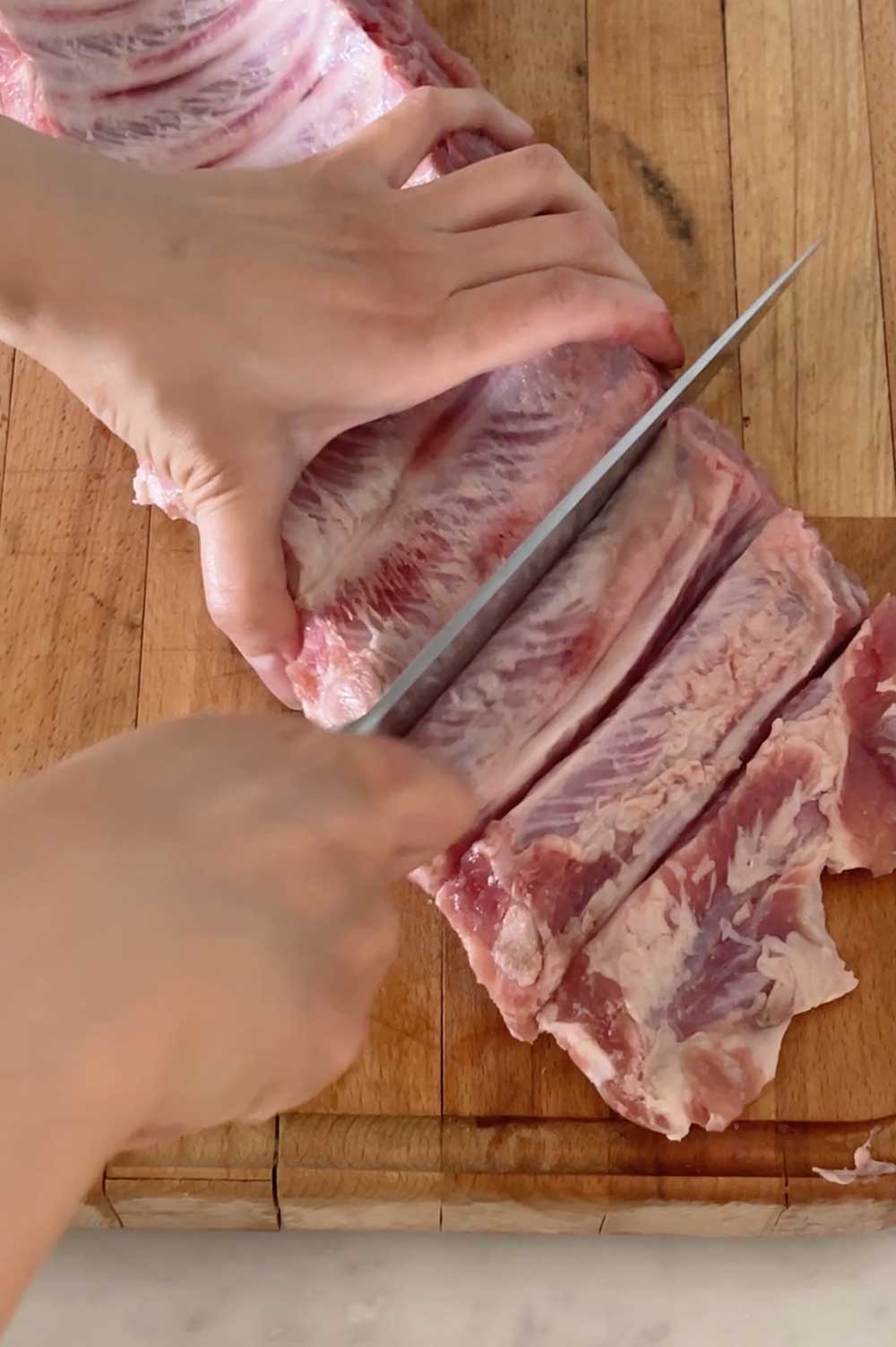
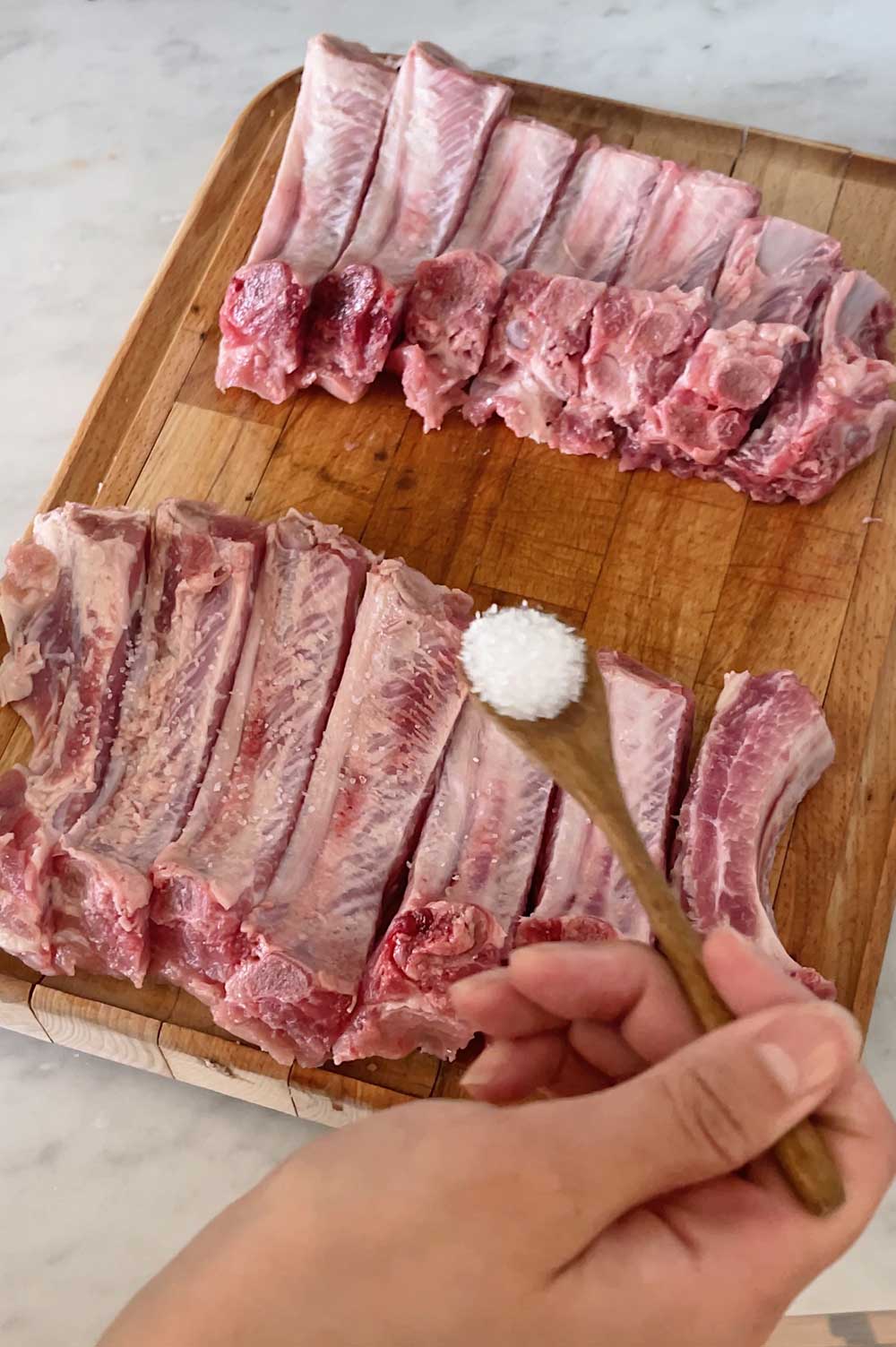
Remove the Membrane
Roasting Tray
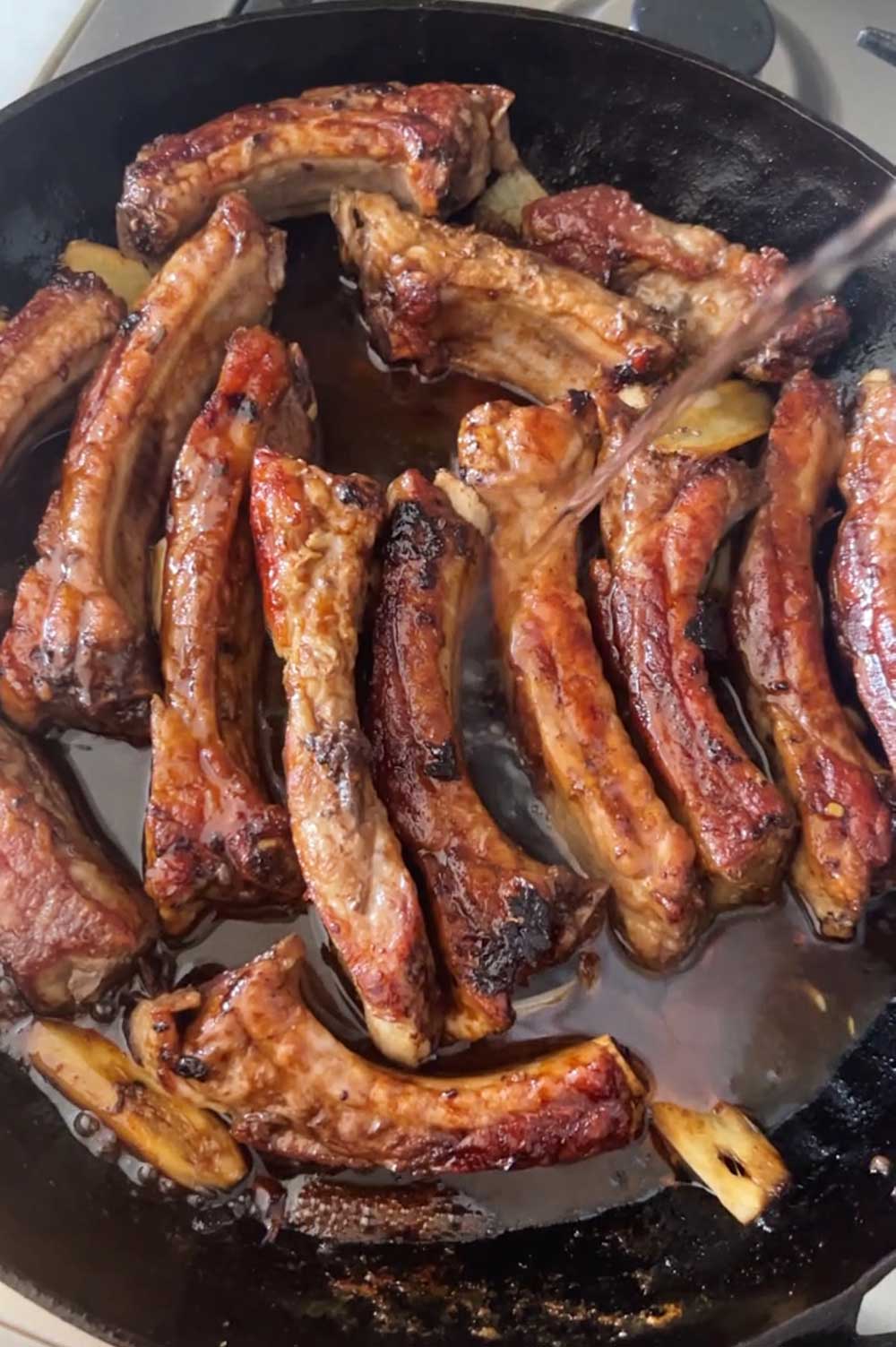
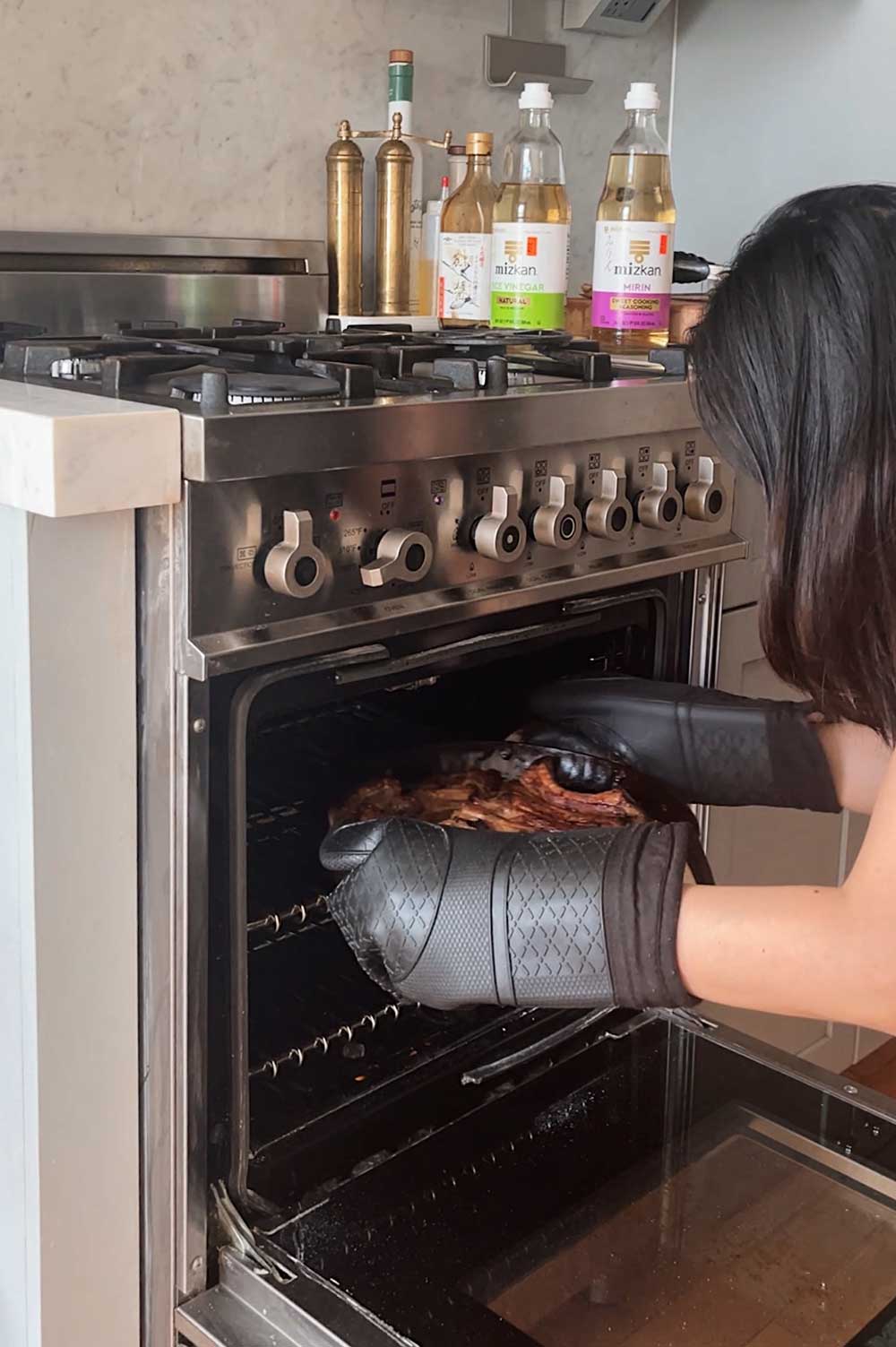
Spices
Measurements
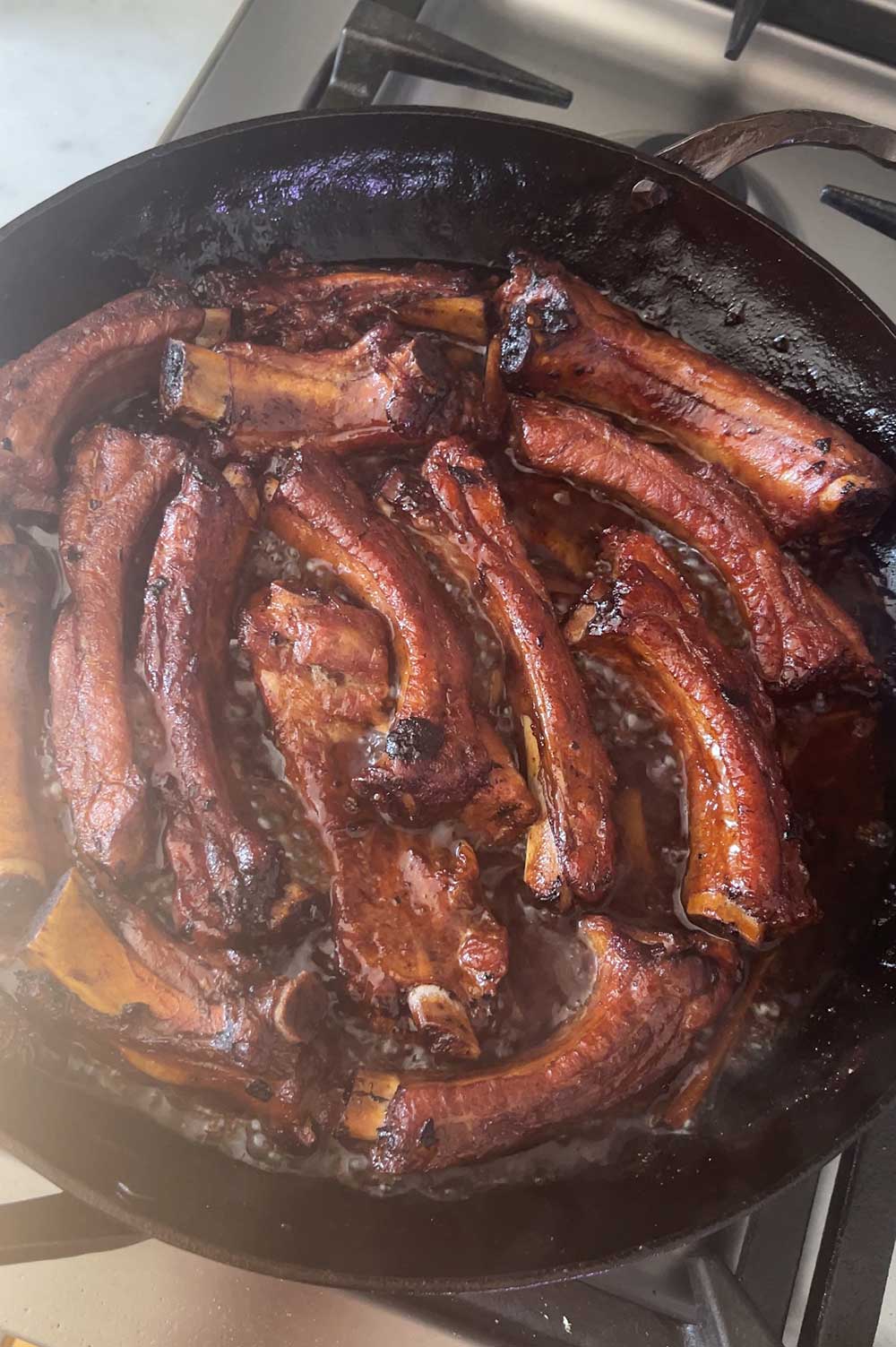
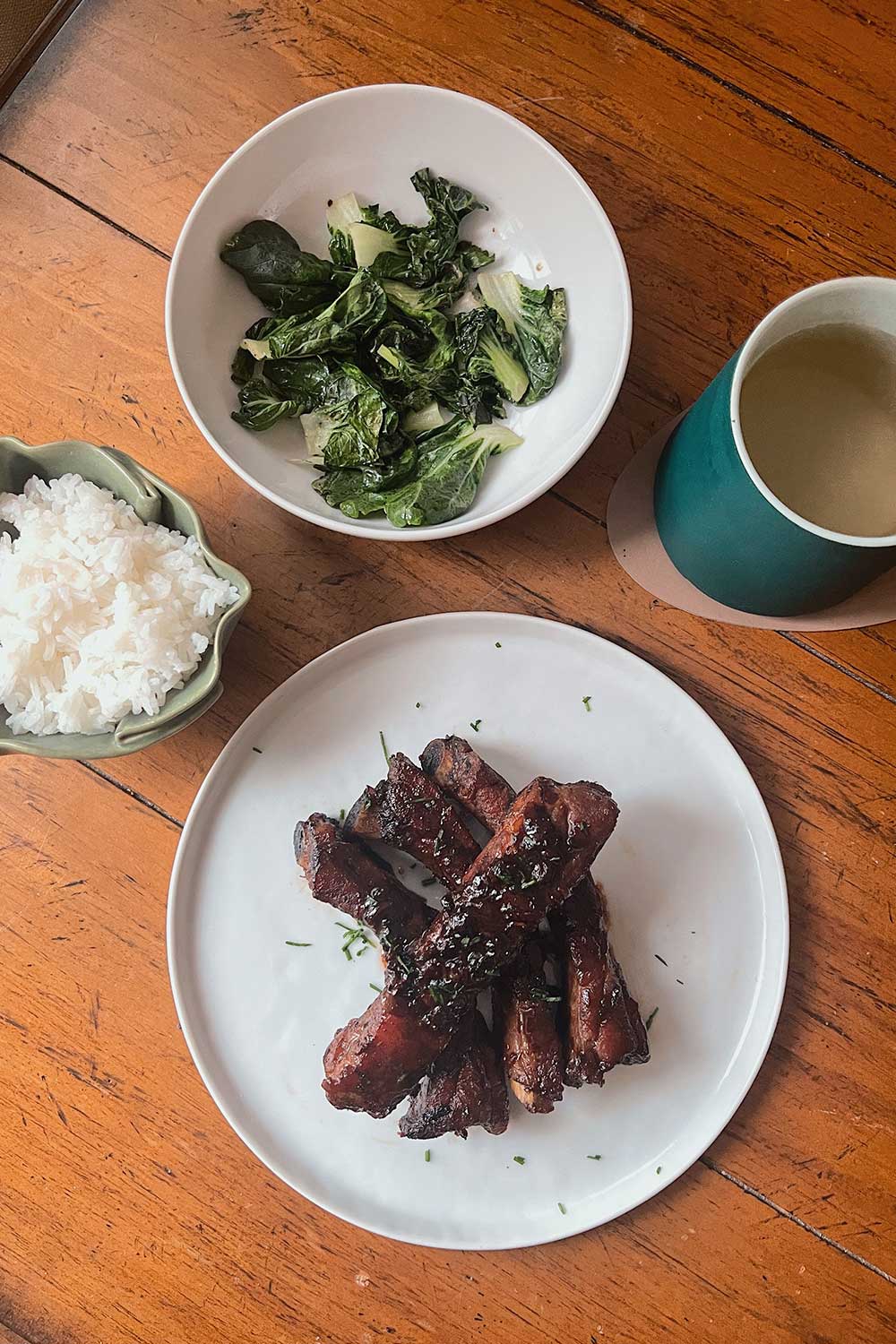
Reheating
Sticky Chinese Style Ribs Recipe
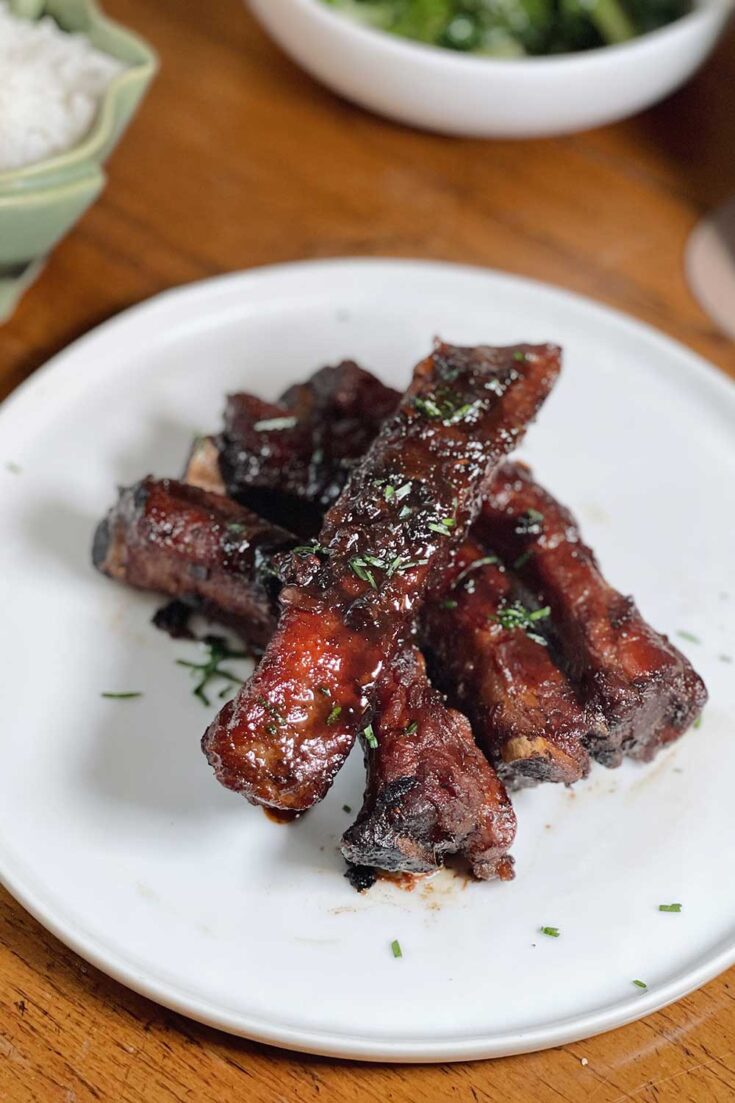
Gordon Ramsay's Sticky Pork Ribs
Ingredients
Instructions
Recommended Products





